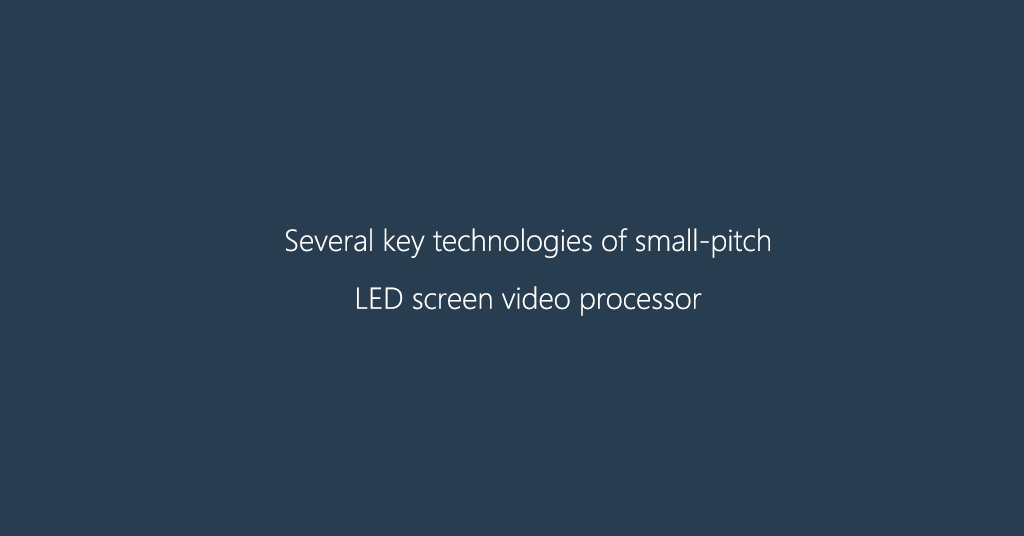How to do lightning protection measures for LED screen?
As the display area of small-pitch LED screen products becomes larger and larger, projects of tens of square meters are not uncommon. The physical resolution of the led screen often exceeds 1920×1200, that is, each ultra-large-scale LED screen is composed of several It consists of several independent display areas driven by the LED controller. For the application of the splicer, it is only necessary to provide several DVI output interfaces corresponding to the number of LED controllers and to splice and display the entire LED screen. In the application of splicers in small-pitch LED screens, there are several key technologies worthy of attention.

Signal Output Synchronization
The multi-channel DVI signal output of the video processor must have the synchronization problem of the signal. When the asynchronous signal is output to the LED screen, there will be picture tearing at the splicing point, especially when playing high-speed moving images. How to ensure the output synchronization of signals becomes the key to measure the success or failure of a splicing system.
graphics processing algorithm
As we all know, point-to-point image display is the best. After the reduced image, if only ordinary graphics processing technology or general-purpose FPGA graphics processing algorithm is used, the edges of the image will appear jagged, and even pixels will be missing, and the brightness of the image will also decrease. The high-end image processing chip or the FPGA system using complex graphics processing algorithms will ensure the display effect of the reduced image to the greatest extent. Therefore, a good graphics processing algorithm is a key technology for a splicer applied to small-pitch LED displays.
Output at non-standard resolutions
The small-pitch LED display is spliced by LED screen panels of the same specification one by one, and the size and physical resolution of each display unit are fixed. However, the entire large screen spliced together is often not a standard physical resolution. For example, the resolution of the display unit is 128×96, which can only be spelled into 1920×1152, but not 1920×1080. In an ultra-large-scale splicing system, the LED display area driven by each LED controller may not have a standard resolution. At this time, the output of the splicer with a non-standard resolution is critical, which can help us quickly find a suitable Splicing mode, so as to allocate resources reasonably and effectively save the number of LED controllers and transmission equipment used.
Galaxyav is a professional LED screen manufacturer, in more than 20 years, we have completed the manufacture and delivery of a large number of LED screen projects. We have very rich experience in the field of audio-visual system integration and can provide you with one-stop solutions and product delivery services. If you are interested in LED screen or audio-visual system integration projects, please contact our senior technical engineers, we will solve the problem for you as soon as possible
Others also read the following article
Want to know more about the Audio Visual Solutions?
